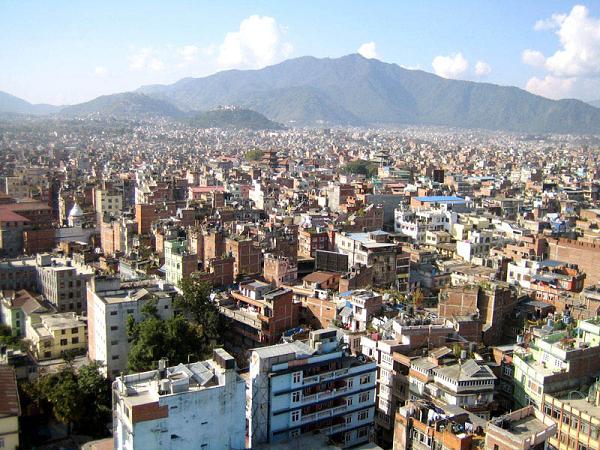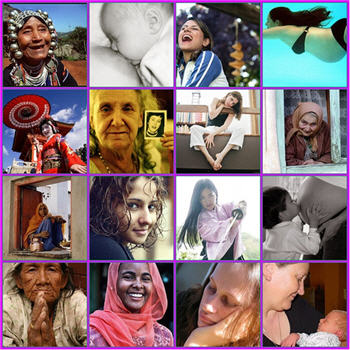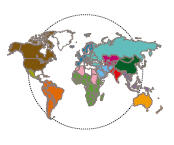guest |
November 20th, 2012
Today is Universal Children’s Day, a day to remind people across the globe of the rights and welfare of children.

Children's Day highlights the importance of welfare.
The day was first established in 1954 by the General Assembly of the UN as a response to child labour. The day highlights the inhumane aspects of child labour: the long hours, dangerous work conditions, and denial of education.
In most countries, the situation of child labourers has improved drastically since 1954, but there are still over 215 million child labourers around the world today. The UN is worried about the current trends because it seems that the number of child labourers is on the rise in poorer countries. The UN has therefore declared to eliminate child labour by 2020. This declaration fits into the Millennium Development Goals (MDGs), which all have a target date in 2015. Although the MDGs are for all human kind, they are primarily about children.
“We were all children once,” is the message from the secretary general on Universal Children’s Day. “We all share the desire for the well-being of our children, which has always been and will continue to be the most universally cherished aspiration of humankind.”
Happy Universal Children’s Day everyone!
Read more:
World Day Against Child Labour – June 12th
 Halloween Day is celebrated as a festival around the world.
Halloween Day is celebrated as a festival around the world.
Especially celebrated by the younger generation, this festival of All Hallowes comes about as a practice followed among the Christian population and has its origins as a Pagan Celtic festival – Samhain. It’s celebrated the night before the Christian Festival of All Saints Day. Adults create laterns for their children made from large pumkins which have been made into ghoulish faces. Children play ‘trick or treat’.
However, in the Nordic countries this is the evening when friends and relatives who have died are remembered. People often go to the cemetary and place lit candles in the snow. The sight of hundreds of candles burning in the dark, illuminated by the white snow is quite a sight.
Find out more about Halloween
Find out more about All Saints Day
guest |
October 17th, 2012
“Wherever men and women are condemned to live in extreme poverty, human rights are violated. To come together to ensure that these rights be respected is our solemn duty.” Joseph Wresinski, the founder of ADT Fourth World
Today is the International Day for the Eradication of Poverty. Nearly half of the world’s population (that’s three billion people) live on less than $2.5 a day. 1.1 billion people have inadequate access to water and 2.6 billion people live without basic sanitation. Approximately 790 million people in the developing world are still chronically undernourished, almost two-thirds of them residing in Asia and the Pacific. 18 million deaths a year, one third of the world’s deaths, are caused by poverty.
Nearly half of the world’s population (that’s three billion people) live on less than $2.5 a day. 1.1 billion people have inadequate access to water and 2.6 billion people live without basic sanitation. Approximately 790 million people in the developing world are still chronically undernourished, almost two-thirds of them residing in Asia and the Pacific. 18 million deaths a year, one third of the world’s deaths, are caused by poverty.
All the more shockingly, an average cow in the European Union receives more than £1.40 a day in subsidies, which is more than the amount that half the world’s population survives on.
This year’s theme for International Day for the Eradication of Poverty is “Ending the Violence of Extreme Poverty: Promoting Empowerment and Building Peace.” Just like the quote above by Joseph Wresinski, this theme recognizes poverty as a human rights violation, rather than simply as a low income level.
Read more.. »
guest |
October 15th, 2012
It is estimated that 60% of chronically hungry people are women and girls. Today is International Day of Rural Women, a day that recognizes the vital role of rural women, including indigenous women, in enhancing agricultural and rural development, improving food security and eradicating rural poverty.

60% of chronically hungry people are women.
The day is purposefully held a day before World Food Day in order to highlight the role rural women play in food production.
The International Day of Rural Women was first observed at a significant time in October 2008. 2006, 2007, and 2008 were the years of the global food crisis when prices of staple foods rose dramatically around the world. Although prices declined slightly right afterwards they spiked again in 2010 and have been high since. UN Women Watch writes that food prices are “likely to remain high and volatile over the next decade.”
Poor rural households feel the global crises the hardest. The poorer the household the more its members have to change the way they live to cope with the crises.
Read more.. »
guest |
October 1st, 2012
In 2008, for the first time in history, more than half of the world’s population was living in cities.

Today more than 50% of the world's inhabitants live in cities.
Today is World Habitat Day, and this year’s theme is Changing Cities, Building Opportunities.
World Habitat Day was first observed in 1986. The purpose of this day is to highlight the role of shelter as a basic human right, and reflect on the state of our cities and towns around the world. This year’s urban theme was chosen because cities are engines of growth, and across the globe more and more people are moving into cities in the hope of a better future. According to research done by the Massachusetts Institute of Technology cities make up only 2% of the world’s surface, but they house more than 50% of the world’s population, consume 70% of the world’s energy, and are responsible for the 80% of the world’s carbon footprint. Research from Yale predicts that by 2030 10% of the world’s surface could be urban, most of this expansion happening in Asia…
Read more.. »
guest |
August 30th, 2012
Today is the International Day of the Disappeared, a day to remember those who have been imprisoned without their friends and families knowing where or why.
In 2008, approximately two people were announced as ‘disappeared ‘every day.
The day originates from the efforts of the Latin American Federation of Associations for Relatives of Detained-Disappeared, a Costa-Rican NGO founded in 1981 that officially started the fight against secret imprisonment and forced disappearances. Today, larger organizations such as Amnesty International and the International Committee of the Red Cross are also doing valuable work in this field. International Day of the Disappeared is not only a day to mourn those missing, but also to highlight the work of these NGOs, raise awareness, and to raise funds for future ventures and campaigns against secret imprisonment.
Read more.. »
To honour the spirit of the Olympics 2012, 204 poems from around the world, from Afghanistan to Zimbabwe, have been collected from each of the 204 participating countries by the Scottish Poetry Library.
Here are the first ten from South America and the Carribean. Enjoy!
- Antigua and Barbuda: Plantain
- Argentina: Sidewalks of Buenos Aires
- Bahamas: Mangroves
- Belize: When a fish…
- British Virgin Islands: Crescendo
- Colombia: The House
- Dominica: In The Woods
- Dominican Republic: Find Work
- Ecuador: The Weathercock of the Cathedral at Quito
- Jamaica: A Song For My Father
The poems selected are often not by the most notable poet a country has produced. Some of them are funny or light-hearted. Often they are snapshots of lives rather than grand narratives. And some of the choices may be controversial. However, they all give a glimpse of lives in countries spanning the globe. Together these poems depict a world united not only by sport, but by emotions that are universal and need no translator other than the heart.
Today is World Environment Day (WED), one of the principle ways in which the UN stimulates worldwide awareness of the environment and enhances political attention and action.
This year’s theme is Green Economy: Does it include You? Basically, what the UN means by Green Economy are the overall efforts of nations to reduce carbon emission and pollution, to enhance energy and resource efficiency, and to prevent the loss of biodiversity.  According to the UN Environment Program, Green Economy both significantly lowers environmental risks and improves human well-being and social equity. This years theme, therefore, aims to encourage people to find out more about Green Technology and about the various different ways in which they are already included, and the ways in which they can participate further. The official WED website is pledging people to “help break the record for the greatest number of activities registered in WED’s four decade history.”
According to the UN Environment Program, Green Economy both significantly lowers environmental risks and improves human well-being and social equity. This years theme, therefore, aims to encourage people to find out more about Green Technology and about the various different ways in which they are already included, and the ways in which they can participate further. The official WED website is pledging people to “help break the record for the greatest number of activities registered in WED’s four decade history.”
Read more.. »
International Women’s Day is a global day to celebrate the economic, political and social achievements of women past, present and future. The first IWD was launched by a woman named Clara Zetkin (German) in 1911. In some places like China, Russia, Vietnam and Bulgaria, IWD is a national holiday. However, the plight of women and the hardship they still face in many countries is highlighted by many organisations – see below.

Global issues facing women include:
Females in developing countries on average carry 20 litres of water per day over 6 km
Globally, women account for the majority of people aged over 60 and over 80
Pregnant women in Africa are 180 times more likely to die than in Western Europe
530,000 women die in pregnancy or childbirth each year
Of 1.2 billion people living in poverty worldwide, 70% are women
80% of the world’s 27 million refugees are women
Women own around only 1% of the world’s land
AIDS sees women’s average life expectancy reduced to 43 in Uganda and Zambia
Women are 2/3 of the 1 billion+ illiterate adults who have no access to basic education
Read Fakhria Ibrahimi’s account of the plight of women in Afghanisaton
Official International Women’s Day site – see how you can help bring about change in the world.
Photograph by web/graphic designer Melanie Cook, used with permission. Thank you!



 Halloween Day is celebrated as a festival around the world.
Halloween Day is celebrated as a festival around the world. Nearly half of the world’s population (that’s three billion people) live on less than $2.5 a day. 1.1 billion people have inadequate access to water and 2.6 billion people live without basic sanitation. Approximately 790 million people in the developing world are still chronically undernourished, almost two-thirds of them residing in Asia and the Pacific. 18 million deaths a year, one third of the world’s deaths, are caused by poverty.
Nearly half of the world’s population (that’s three billion people) live on less than $2.5 a day. 1.1 billion people have inadequate access to water and 2.6 billion people live without basic sanitation. Approximately 790 million people in the developing world are still chronically undernourished, almost two-thirds of them residing in Asia and the Pacific. 18 million deaths a year, one third of the world’s deaths, are caused by poverty.




 Hello, I'm Deborah Swallow and, for the last fifteen years, I've worked in over thirty countries addressing the complexities of people working internationally across multiple cultures, so individuals and organisations alike can gain an authentic competitive edge and win in international markets.
Hello, I'm Deborah Swallow and, for the last fifteen years, I've worked in over thirty countries addressing the complexities of people working internationally across multiple cultures, so individuals and organisations alike can gain an authentic competitive edge and win in international markets. 